Celtic and Franciscan

Things Ancient
Things New
It has been approximately a thousand years since Celtic monastic life was actually lived in Ireland. The Poor Clare Monastery of the Light of Christ, located in Co. Louth, is the first women’s foundation in Ireland where this ancient form of religious life has been restored as a living reality.
As Poor Clares we bring together two great religious life traditions - the Celtic and the Franciscan. Alice Curtayne writes, “The Franciscan movement might be described as a refloresence of the Celtic Church, of which it bore all the distinctive marks.” (Life of St. Brigid, 119)
Celtic Tradition
St. Brigid (c. 451-525), the foundress of women’s religious life in Ireland, was born in Faughart, a mile down the road from our monastery. Brigid’s form of life was Celtic monasticism. Her contemporary, St. Moninna (432-518), continued this tradition and established the first women’s monastic settlement on Faughart Hill, in the foothills of the Cooley Mountains. The ruins of this monastery overlook our own monastery. Later, Moninna retired to Killeavy, at the base of Slieve Gullion, where she established another monastery.
The Celtic monasteries took inspiration from the lifestyle of the 4th century Desert Fathers and Mothers. They were essentially eremitical in style and consisted of several small hermitages or “beehives” with a central church and other community buildings. Because they were modelled on the
Celtic Influence on Francis
Franciscan scholars believe that in his early life, Francis spent time in a Celtic monastery in Bobbio in N. Italy, founded by the Irish monk, St. Columban (c. 612).
Francis may have been influenced by the model of Celtic monastic life that he observed there, for the Celtic way incorporated life in solitude with life in community.
Franciscan Way
Francis and Clare adopted this ancient tradition and re-imagined it anew in their vision of gospel life. The first friary at St. Mary of the Angels, near Assisi, which Francis called the Portiuncula (Little Portion), was modelled in a way similar to the Celtic monasteries with a central church surrounded by individual hermitages or small huts for solitary prayer. Francis always wanted the simplicity and poverty of this place to be the model for the whole Order.
When Clare joined the Order, Francis and the friars received her at the Portiuncula and this place would have inspired her life with her sisters at San Damiano.
Faughart Monastery
It is this tradition that continues in our monastery in Faughart. Every day, in the solitude of her hermitage, each sister becomes an explorer of the interior spaces where she opens up the world to God; where she discovers her own unity with all human beings and carries in her prayer the whole of humanity. The rhythm of life that the community follows is based on the Rule of St. Clare and is influenced by the Rule for Hermitages, written by St. Francis.
Glendalough, Co. Wicklow
Saul, Co. Down
Nendrum, Co. Down
St. Francis’
Rule for Hermitages
“. . . and they may have
an enclosure
in which each one
may have her small cell
in which she may pray . . .”
Portiuncula, Assisi
Franciscan scholar William Short, ofm notes, “What we know of the physical layout of early Franciscan hermitages (for example, the Porziuncola near Assisi) resembles the . . . lavra style . . . individual cells or huts separated from each other, clustered around a church or oratory in a kind of monastic village.”
Franciscan Eremitical Tradition
Francis and Clare lived at a time when there was a strong eremitical tradition in the Church and they would have been familiar with this. They embraced many of the principle ideals of the eremitical life – solitude, separation from the world, intense and prolonged prayer, poverty, asceticism and silence. Francis’ own way of life tended to alternate between this kind of intense experience of solitude and the itinerant mission of preaching the gospel. Clare was settled in her monastery at San Damiano and so she was able to establish a more permanent way of life based on the elements of the eremitical tradition. The genius of Francis and Clare was that they were able to hold these eremitical elements along with a vibrant experience of gospel life in community.
What serves as the
inspiration for our Poor Clare
way of life?
The inspiration for the Monastery
and for our way of life
comes from two ancient sources:
Celtic monasticism and
the eremitical tradition
adopted by Francis and Clare.
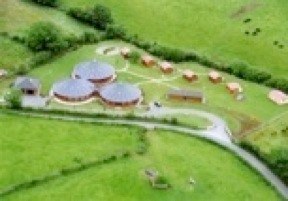
early Egyptian monasteries, the monastic sites in Ireland were often referred to as “diseart” i.e. desert. The desert is a symbol of death and resurrection. It is a place of extremes where the solitary friar/sister becomes the meeting point between the poverty of nothingness and the transcendent. It is the place where the bridegroom draws His bride to speak to her heart.
“The desert is the logical dwelling place for the one
who seeks to be nothing but herself.”
(Thomas Merton, Thoughts in Solitude)
Many ancient Celtic monastic models incorporated the use of circles in both the architecture of the buildings and used the circle to define the perimeter of the site itself. Buildings were mostly made of timber, especially the larger structures, and the layout of the site was always in harmony with the landscape. Curtayne describes the monasteries founded by Brigid in this way, they “were as a rule clusters of wattle and clay huts, enclosed by great stone or earthen walls.” (Life of St. Brigid, 66.)
Examples if ancient Celtic monastic settlements that include these features can be found all over Ireland.
From St. Francis’ Rule for Hermitages:
Those who wish to stay religiously in lonely places . . . each one should have her cell,
in which she can pray . . .
. . . they should desire to keep silence . . .
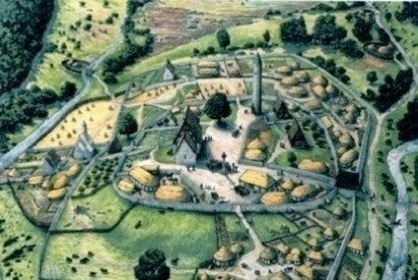
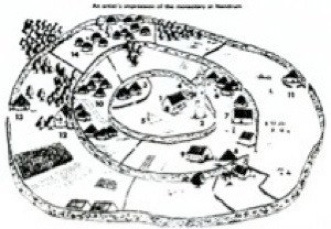
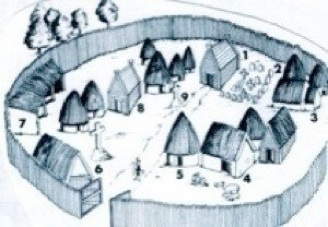
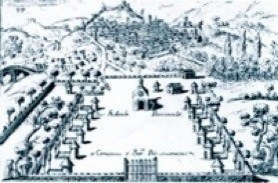
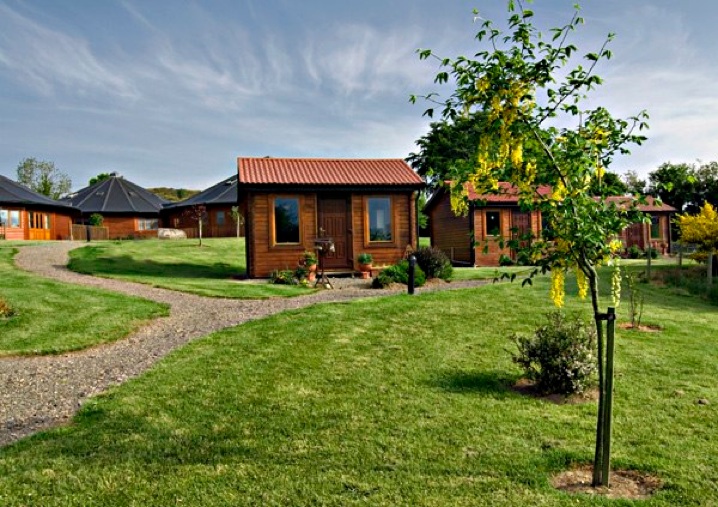
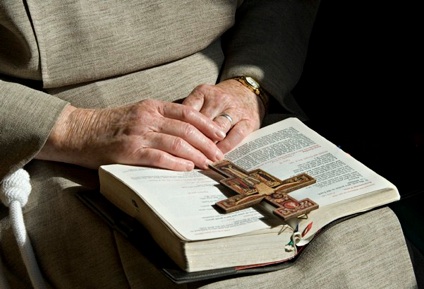
Gaze upon Him, consider him, contemplate Him,
as you desire to be like him. - St. Clare

. . . they should rise in the morning and seek the kingdom of God . . .